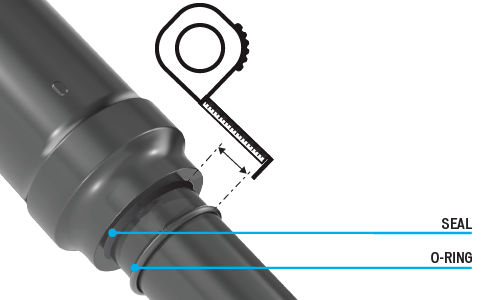Adjust Your Bike Fit & Suspension
Ensuring that your bike is properly fit to you is an important step in preparing for your first ride. Your Authorized Specialized Retailer will be able to provide a basic fit so that you are able to ride comfortably and efficiently. Specialized also offers Retül Fit, a data-driven bicycle fitting tool designed to improve comfort, prevent injury, and increase performance.
Adjust saddle height
When adjusting the saddle height or installing an aftermarket dropper post, it is important to ensure the insertion depth is within the acceptable range. The Status 140 and 160 frames require a minimum seatpost insertion of 100 mm.
All models use a 34.9 mm seat post and a 38.6 mm seat collar. When adjusting the saddle height, please ensure you tighten the seat collar bolt to the appropriate torque setting of 55 in-lbf or 6.2 Nm.
Set up the suspension
Proper suspension setup is crucial for achieving the best ride experience on a full suspension bike.
Set air shock pressure and sag
- Set the shock compression lever or knob (blue) to the full open or off position, and set the rebound knob to the middle of the click range.
- Attach a high-pressure shock pump to the air valve and set your shock pressure based on your weight.
- To check the sag, push the o-ring against the seal, then mount the bicycle while propped up against a wall. Sit in the saddle in a normal riding position, without bouncing. Do not set sag while riding!
- When the pressure is correctly set, the o-ring will move about 30% of the shock stroke distance after the rider's weight has been applied to the bike with no bounce.
To set your sag correctly, measure from the seal to the o-ring as shown in the image below, after following the above steps. 30% sag is 16 mm for the Status 140 and 18 mm for the Status 160.

Adjust rebound
Rebound damping (red knob) controls how quickly the shock returns after a compression. The rear shock has a range of rebound clicks to fine-tune the rebound return rate.
- Start with the rebound set in the middle of the click range.
- Turn clockwise for slower rebound (heavier riders, slower speed, bigger hits).
- Turn counter-clockwise for faster rebound (lighter riders, faster speed, smaller bumps, and greater traction).




























































































